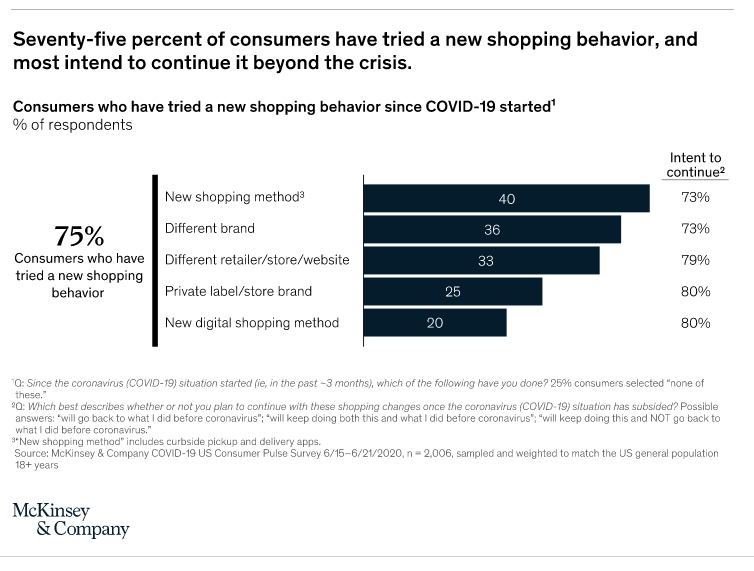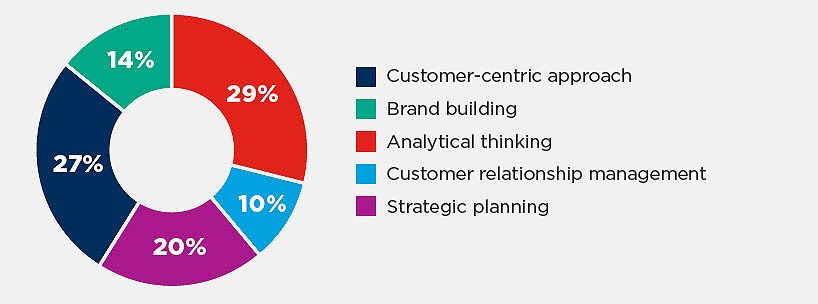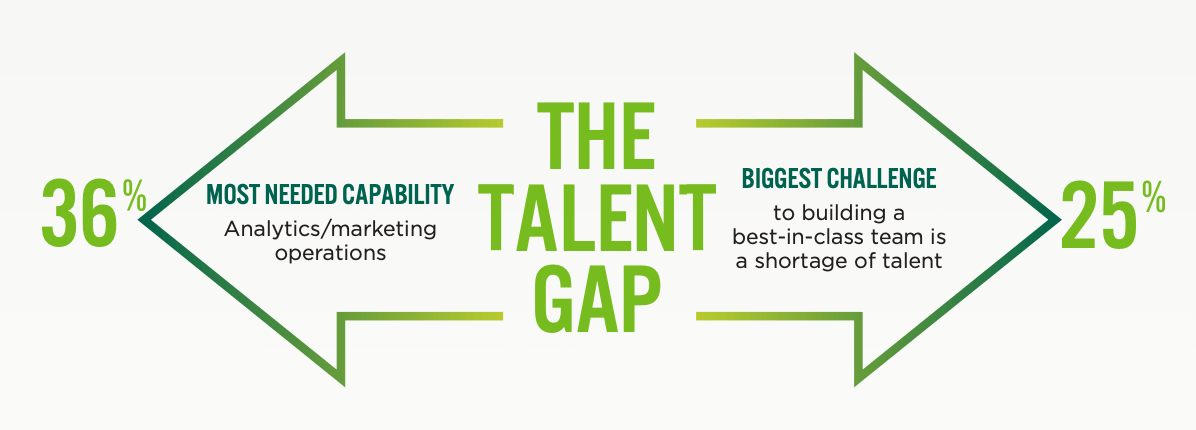Marketing is an old profession. It’s been around for hundreds of years in one form or another. But with the advent of digital in the early 80’s, companies began taking a serious look at their marketing strategies.
Many organisations realised that it was time for a major overhaul of their primarily outbound strategies. Consumers no longer appreciated being interrupted in their daily lives, if they ever did! Marketing had to find ways to stimulate more inbound engagements, but how?
However, after trying multiple inbound marketing strategies, they find that they are still irritating their customers with spammy emails, intrusive pop-ups and over-complicated cookies, that gather far more information than most organisations will ever need or use. At least those will soon be a thing of the past!
Despite these changes, CMOs remain one of the leading c-suite members who struggle to keep their jobs for more than four or five years. The reasons are many, but the post “Head of Marketing, How Can You Keep Your Job When Most CMOs Are Losing Theirs?” explains what you can do to ensure that you leave your position when you want to and not on your CEO’s terms.
Brand Building
Many large CPG companies, such as P&G, Coca-Cola and Nestle, have changed the name of their Marketing departments in the past twenty years, to Brand Building. They hoped that it would revive sales and give new vitality to their communications to better engage their customers in the new social world. But most failed miserably, because they remained very much in a state of business as usual. They continued with the same processes and mind-sets. And with few exceptions, they prioritised thoughts about themselves and their brands, and rarely took their customers’ perspective.
A more recent change is bringing more marketing tasks in-house, as P&G has done. Read more here. While this certainly saves a considerable part of their budget, the biggest advantage from my perspective, is that these companies automatically learn more about their customers’ behaviour. When you are planning communication campaigns and deciding on ad spend, you need to understand where your customers are and when they are most open to receiving your messages. That for me is far more valuable than any savings on agency costs. What do you think?
Even without making such a drastic move, many other consumer goods companies have realised that to satisfy the consumer they had to do things differently. They were the ones that moved to customer centricity. Or to be exact they started on their journey towards putting the customer at the heart of their businesses. Customer centricity is not a destination, because consumers are constantly changing and their satisfaction never lasts for long. It is a journey where you are accompanying your customers with the aim to satisfy and delight them, however they change.
One of the issues that has been created by marketing is that I believe we have taught our customers far too well! They understand a lot more about “marketing” than they used to. They understand that companies have marketing plans, all too often repeated with few changes from one year to the next. As a result they have regular promotions, so our customers understand this and just wait for the next price offs before buying, whenever they can.
Our customers also realise that advertising highlights changes that in reality don’t exist between brands other than in terms of image. In today’s world, products and services have become more and more similar from one company to another. Their format, colour or perfume may differ, but there are strong similarities in their performance and benefits.
That’s why consumers now often have a portfolio of brands from which they choose in many categories. They are far less likely to be loyal to only one brand than they used to be. Just take a look at these statistics from the US.

What this research also highlights is a change in shopping behaviour, far more complex than just moving purchases online. Customers are open to changing and have become far more comfortable with adapting to new ideas.
They now expect constant innovation which becomes difficult to satisfy, since they quickly adjust to the once novel idea and start searching for the next big improvement. According to Accenture’s “ Customer 2020: Are You Future-Ready or Reliving the Past?” almost a half of consumers believe that they are more likely to switch brands today compared to just ten years ago!
Customer Centricity
In response to these ever more savvy customers, marketing has to change. In the 2015 Korn Ferry CMO Pulse Report, it confirmed that marketers need new skills and can no longer rely on creativity alone.

In their 2020 update, they mention that their biggest challenge is the gap in talent, especially when it comes to analytics and marketing operations. Data is vital to customer understanding so if they can’t turn their customer information into knowledge and insight, they will never become truly customer centric.

If you’re interested in up-skilling your own team, then C3Centricity provides fun training course, both online and in-person, on many areas of customer centricity. Download our training brochure and then contact us so we can discuss your precise needs.
All our courses are personalised to meet your specific requirements; unlike most other training organisations, C3Centricity NEVER delivers off-the-shelf, standardised trainings!
Are You Customer Centric?
Companies that place their customers at the heart of their business, are easy to recognise. Their websites are filled with useful information, entertaining videos and engaging games. Their contact pages provide many alternative ways for customers to reach out to them, rather than the less appealing reason menu and message box that seems to disappears into hyperspace! Their advertising is emotional, with the customer and not the brand as the hero. They involve their customers in many aspects of their business.
If you would like to start involving your customers more in your own business then the post “The exceptionally easy and profitable uses of co-creation” is a popular and highly recommended read.
And if you’re not sure how good your customer centricity is, just take a look at your own website and then complete our free quiz CX C3C Evaluator™.
Moving Beyond Brand Building
Whether you are still doing marketing or have already moved to brand building, here are some ideas that you can use to help you quickly move forward on your journey to greater customer centricity:
1. Place pictures of consumers everywhere, so people start to naturally think about them. This can be in your office reception, on the lift doors, other places where many employees spend time like the coffee machine or water fountain, or restaurant waiting and eating areas. You can also add representative images of real customer photos to the front of your reports, and at the beginning and end of presentations. The more employees see pictures of the customer, the more they will think about them and what it takes to delight them.
2. Whenever you take a decision, ask yourself this one magic question: “What would our consumers think about the decision we have just taken?” If you believe that they would disagree, then you should reconsider your options.
Asking this simple question and check after every decision will avoid such practices as hiding price increases by reducing pack content without telling the consumer. Or asking credit card details for the use of a “free” trial, in the hope that the customer will forget and be automatically charged for a service they may not want. For more examples of how companies “cheat” their customers read “How to cheat the customer-or not!”
3. Review the structure and content of your website in minute detail. If there are more “we’s” than “you’s” then you know what to do. And while you’re online, check out your contact page for possible improvement opportunities, as detailed above. Is there a reason for your customers to stay longer and return, or will their visit be a fleeting connection unable to build a relationship?
4. Take a look at your target consumer description or persona / avatar. When was it last updated? Customers are changing opinions and behaviours at an ever increasing rate, so you need to be with them if not ahead of them, if you want to satisfy their changing needs. If you don’t even have a written document clearly describing them, then use C3Centricity’s 4W™ Template until you develop your own. (you can download it for free HERE)
5. Examine your advertising and communications. Who is the hero in them, your brand or your customer? Consider developing concepts that are more customer centric, by making use of your understanding of them and their emotional triggers.
6. If you are lucky enough to have retail outlets, spend time with your front-line staff and talk to them as well as to your customers. Make use of call centres, in-store promotions and merchandisers to talk to your customers, as well as to the employees who connect with them. They will certainly be able to tell you a lot more about your customers than you yourself know. Then add all the information to your persona description and review your future promotions for any improvements you could make to better satisfy and even delight your customers.
7. Share your latest knowledge about your customers with everyone in the company. This can be through weekly or monthly newsletters with up-to-date learnings from research projects. Or summaries of what your customers are reaching out to your customer services department about. Help every employee to understand the role they play in satisfying the customer. Make them fans of your customers and you will never have to worry about such questionable practices as those mentioned in #2 above.
These are your seven starter tasks for moving from marketing and brand building, to a more customer centric approach to customer satisfaction and delight. Every single one of them has your customer at the heart of them. Are they any others that you’d like to add? I know you can come up with many more ideas than I can on my own, so please share them below in the comments and let your knowledge shine!
If you’d like more suggestions about moving to a new-age, customer-first marketing approach, please check out my book “Winning Customer Centricity“. You’ll see it’s like no other business book you have ever seen! Then you will understand why numerous major CPG / FMCG companies follow its roadmap annually. It’s fun, inspiring and a useful way to track your customer centric journey.
And as I said earlier, if you’re interested in up-skilling your team, then we can provide fun course on many areas of customer centricity, both online and offline. Download our training brochure now and contact us so we can discuss your precise needs. All our trainings are personalised to meet your specific requirements; no off-the-shelf trainings are ever given.













